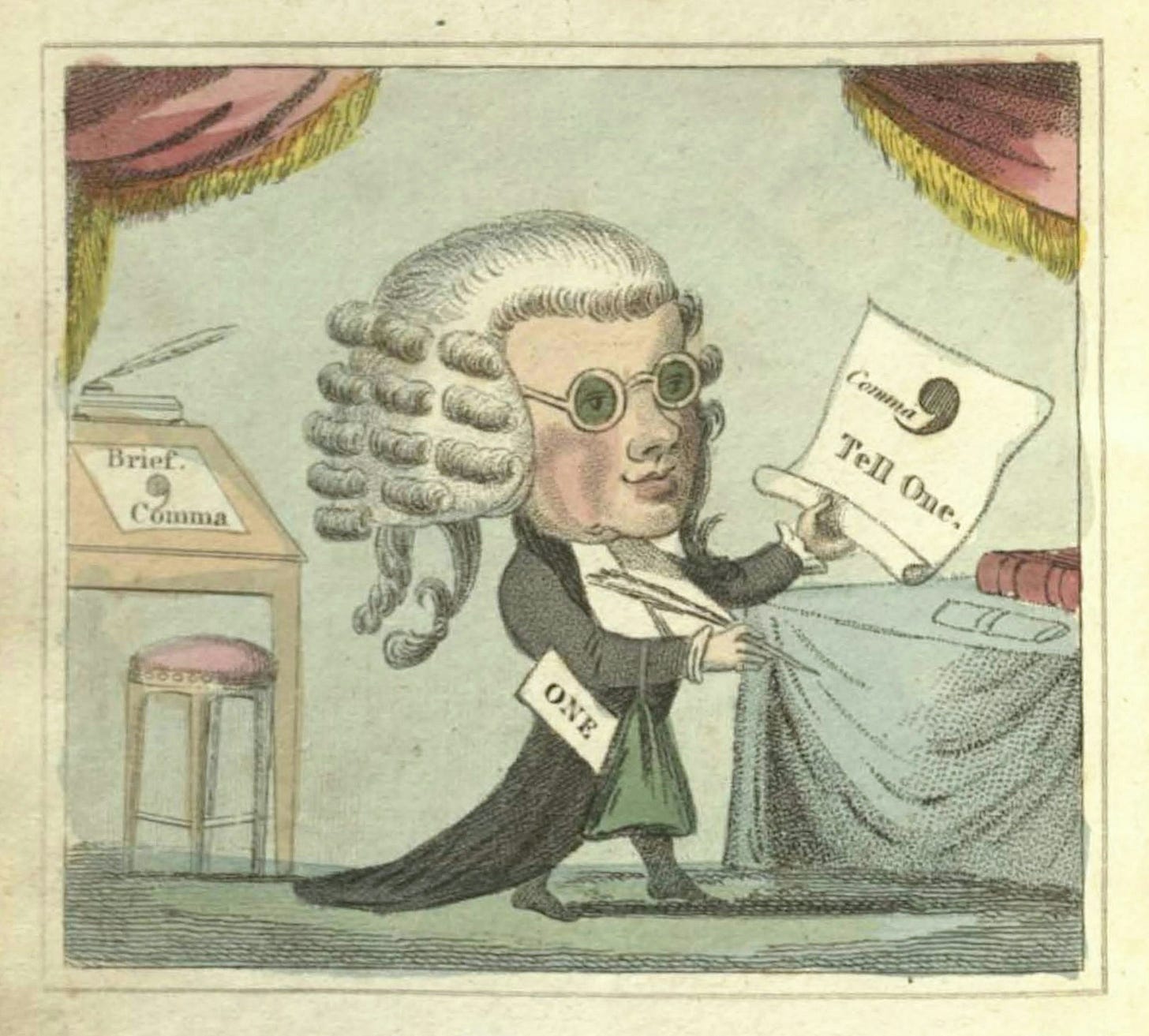What Effective AI Writing Assistance Can Look Like (Hint: It Doesn't Write for You)
Use cases where AI enhances your writing process rather than replacing it
This is part four in a series on AI and authorship. In this part, I provide AI writing assistance case studies that I have personally used and can vouch for.
In part one, I explore the complex landscape surrounding authorship and tool usage.
In part two, I break apart the main uses of AI by Substack writers and the main arguments for/against this use.
In part three, I propose a dynamic framework to judge the ethics of AI writing assistance. With the help of Claude, I've also made a cheat sheet/handout of this post for reference.

The Coin Flip Test: How Effective AI Writing Assistance Actually Works
A friend makes all his life decisions by flipping a coin. Not because he believes the coin knows what's right, but because if he assigns "chocolate" to heads, and “vanilla” to tails, and gets tails, his disappointment tells him he actually wanted chocolate.
This captures how AI writing assistance works best. The most valuable function isn't getting the "right" answer, but using AI responses as a mirror to clarify what you actually want to say. When I read AI feedback on my work, I often think "I don't agree with this"—but that disagreement helps me figure out what I do want.
There's a misconception that "AI for writing" means prompting ChatGPT to generate articles you copy-paste and publish. Real AI writing assistance supports your process while keeping your voice and arguments central. I treat AI like input from a competent colleague whose suggestions I might incorporate, modify, or reject entirely.
Here are detailed case studies from my experience, organized around different types of AI assistance. Note that I do not use all of these regularly—this is just a sampling of use cases I have found to work. For my AI policy and workflow for this newsletter, please see here.
Also note that the appropriateness of each use case depends on how and why you use it, and your industry. For a framework on how to think about the appropriateness of AI assistance in writing, see part three of my writing series.

Case Study 1: The Voice-First Workflow
My most intensive AI experience came during a concussion that left me with severe migraines, cognitive fuzziness, and an inability to look at screens for more than short periods of time. I needed to write, but couldn't use my normal process.
Step 1: Extended Voice Memos I recorded hours of stream-of-consciousness brainstorming, capturing all my ideas and arguments. Within these recordings, I included instructions about organization or asked the AI directly how to structure scattered thoughts.
Step 2: Transcription and Organization I uploaded transcripts to Claude (much better than ChatGPT at preserving tone) and asked it to create detailed annotated outlines with one critical instruction: include only information from the transcript. Without this, AI would add information I hadn't provided—facts that weren't wrong, but arguments I wasn't making.
Step 3: Iterative Feedback After reviewing the outline, I provided detailed feedback via voice memo, specifying what I liked and wanted changed. Seeing the AI's organization helped me realize what structure I actually wanted. This became a multi-round process: after each AI output, I would record another voice memo with specific edit requests, creating several cycles of refinement before moving to drafting.
Step 4: Draft Development Only then would I ask AI to develop the outline into prose, emphasizing it should maintain my wording while adapting from conversational speech to written format. Even here, I continued the iterative voice memo feedback process, giving detailed instructions after each draft attempt.
I sometimes photographed handwritten notes when voice memos felt difficult, creating a hybrid workflow that worked around my limitations. Interestingly, this step-by-step thinking process seemed to help my cognitive recovery—the more I practiced structured analysis through AI feedback, the less support I needed.

Case Study 2: AI as Brainstorming Partner
This is where AI becomes most valuable as a thinking tool, not just a writing tool. I use it when I'm genuinely stuck or when I have a vague idea I want to develop or sharpen, whether I'm writing about it or not.
Finding Words and Concepts: When I can't remember a specific term, I describe it: "You know, that thing where politicians use repetitive language to create alternate realities..." The AI helps me identify the precise concept I'm reaching for. This was especially useful when I was concussed and had memory issues.
Developing Vague Ideas: When I have a half-formed idea that might become an article, I'll present it to AI and ask for Socratic questioning: "I'm thinking about how AI regulation parallels financial regulation, but I'm not sure if this analogy holds up. What questions should I be asking myself?" The AI will probe: "What specific aspects of financial regulation are you thinking about? Where do you think the analogy breaks down? What makes AI different from financial products?"
Working Through Complex Issues: For topics where I have mixed views, I use AI to help me think through pros and cons systematically. I'm not looking for AI's opinion, but for structured questioning that helps me clarify my own thinking. "I can't decide if take-home exams are fundamentally broken or just poorly implemented. Help me think through this." The AI becomes a thinking partner that asks the questions I should be asking myself.
Research Direction Finding: This process often reveals where I need to do more research. Through Socratic questioning, AI helps me identify gaps in my reasoning: "What evidence would you need to support that claim? What counterarguments haven't you considered? What assumptions are you making here?"
The key is that AI's structured questioning approach helps me think more rigorously than I might on my own. It's like having a patient conversation partner who keeps asking "but why?" and "what if?" until I've thoroughly worked through an issue.

Case Study 3: AI as Feedback Provider
The coin flip principle applies across different types of feedback. The value comes from having something to react to, not blindly accepting suggestions.
1. Research Gap Analysis and Deep Research Integration
This has become one of my most valuable workflows. When I finish a draft but feel something's missing, I ask: "What research gaps do you see? What would strengthen this argument? What are the strongest arguments against this position?"
Sometimes the issue is that an argument feels like it's meandering or losing focus. I'll ask: "What are different ways I can reorient or target this? What's the core argument getting lost here?" This helps me identify when I've buried my main point or wandered into tangential territory.
AI creates detailed lists of areas needing support. Then I take it further: I ask it to convert these research needs into comprehensive prompts for tools like Gemini. I use those reports as starting points, verify sources myself, and conduct additional academic research when warranted.
For more information on how I use AI to support me research, you can find my previous article on the topic here.
2. Logic, Flow, and Audience Adaptation
I'm specific about feedback types: "Is this logic sound?" focuses on argument structure. "Where does this feel dense?" targets readability. "How can I make this accessible to general audiences?" helps identify assumptions about reader knowledge.
For adapting technical writing, I ask: "What concepts need explanation? What sections are particularly dense?" This is especially valuable when I've lost perspective on what general readers will understand.
3. Sensitivity Reading
For sensitive topics, I ask AI to "read this from the perspective of X group." This helps identify blind spots and previews potential reactions, letting me address concerns proactively or decide what I'm willing to defend. Sometimes I realize I don't care about certain objections, but the preview still makes my writing more intentional.

Case Study 4: Structural and Technical Tasks
1. Title Generation and Reorganization
When stuck on headlines, I brainstorm with AI, feeding it key arguments and desired tone. I don't often use suggestions directly, but seeing options clarifies what I don't want. Similarly, when unsure about organization, I ask for alternative structures.
2. Tone Calibration
For different audiences, I ask AI to advise on adjusting tone: "How would you adapt this for a formal academic audience?", "Make this more conversational without losing analytical depth," or “Given the audience I'm writing for, what jargon should I simplify or explain?”
3. Copy-Editing and Technical Formatting
For copy-editing, AI reliably handles grammar, sentence flow, and consistency checking. I ask it to provide feedback on the writing and flow of my argument, identifying areas that are dense, confusing, or inefficient.
For footnote formatting, I provide links and style requirements, asking AI to extract bibliographic information. This gets me 70% there, but requires careful review—accuracy decreases with longer lists, and AI occasionally hallucinates details. I work in batches of 10 to make it more manageable and accurate.
For document reformatting (headers, bolding, spacing), I ask AI to write scripts that automate repetitive tasks. These need testing, but save significant time on large documents.

Key Insights
AI works best for process, not content. The most successful applications are process-oriented: organizing thoughts, providing feedback, formatting citations. The least successful are content-oriented: generating arguments or writing from scratch.
Different tools have different strengths. Claude consistently outperformed ChatGPT at preserving voice and avoiding unnecessary rewrites. Experimentation is necessary to find what works for your needs.
Limitations keep you engaged. The most valuable AI assistance has built-in constraints that ensure you remain the primary author: requiring specific instructions, needing careful review, and not trying to do everything.
Other AI Writing Use Cases
I've described many methods I have used and work for me, but I'm not the only one doing so. Here are some other articles and processes you may find useful, as well as other considerations on writing and AI.











This is a really helpful description of some of the ways AI can assist the writing process, organizing thoughts, deepening inquiry, showing missed opportunities or perspectives. I also have found Claude to be much better at this work. Thanks for sharing!
Could not agree more! YES: "AI works best for process, not content." This SO aligns with how I use AI as a writing partner/ peer-editor, but not to actually generate the raw substance. That's on me!